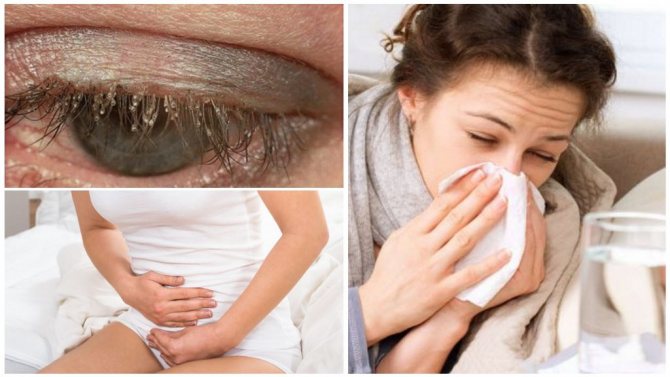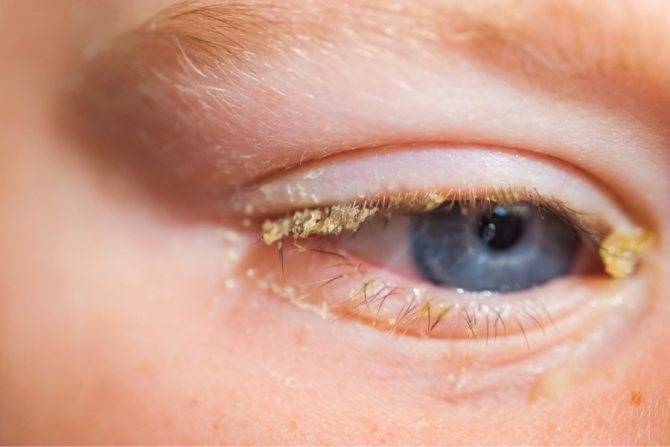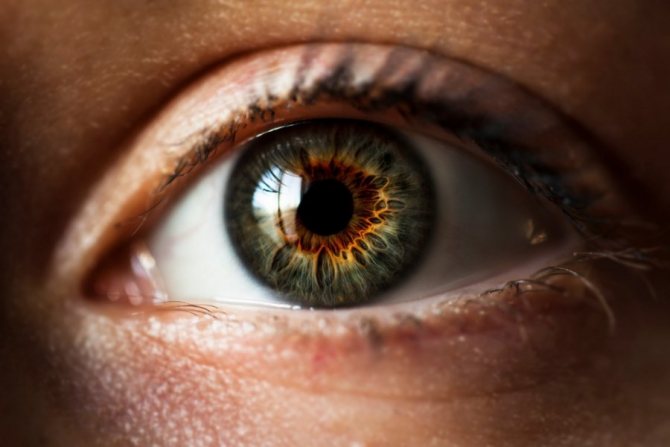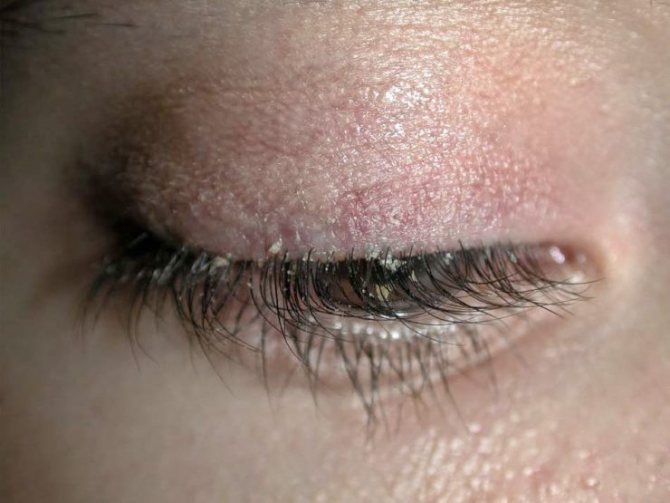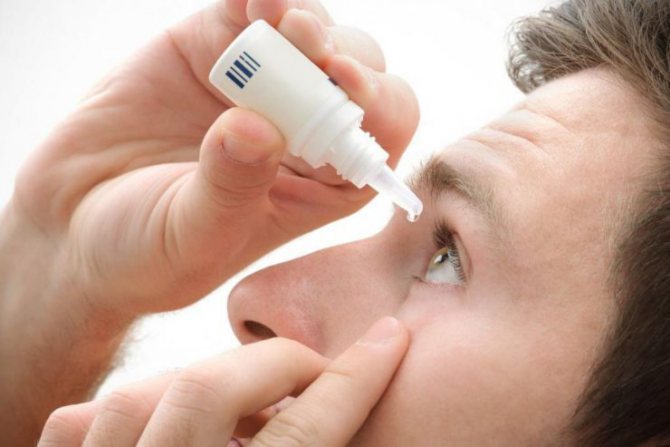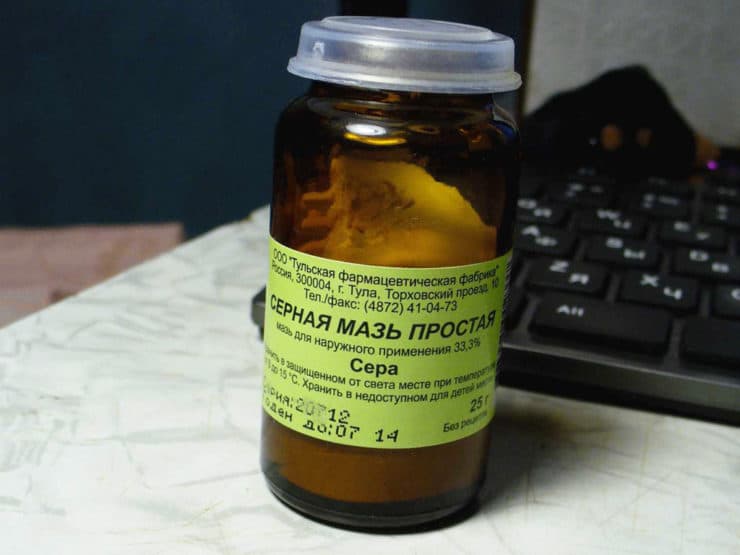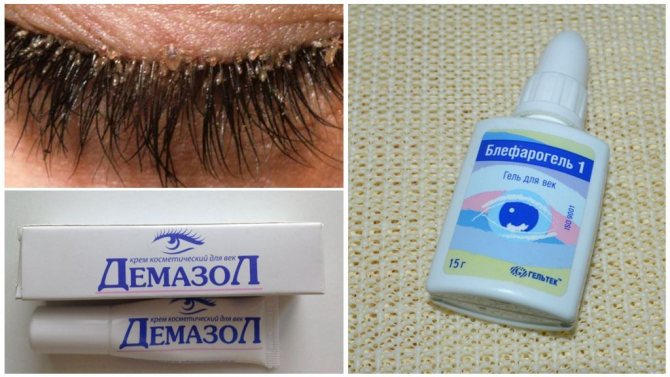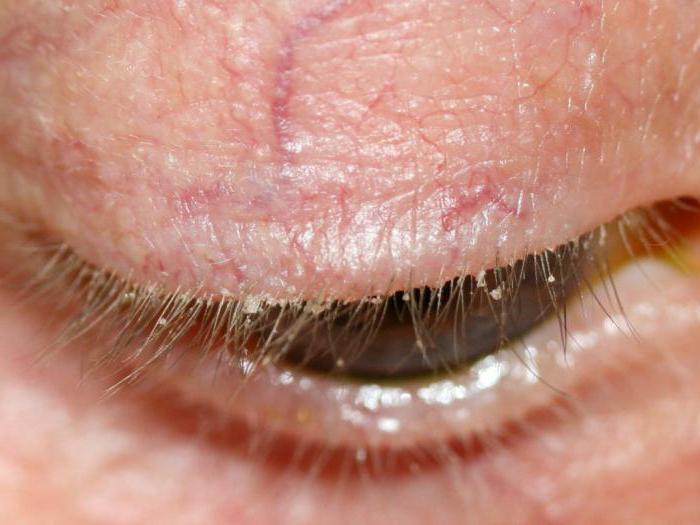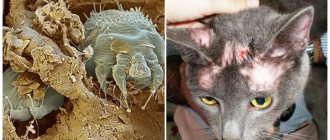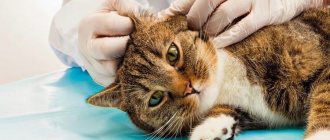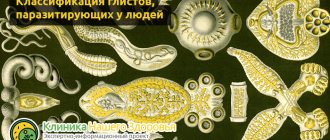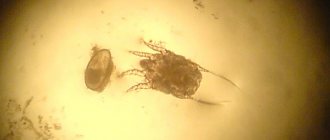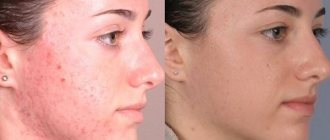With redness, itching of the eyelids, the formation of crusts on them and sticky discharge from the eyes, we can talk about the presence of demodicosis. But before making such a diagnosis, you need to know what an eyelash mite is and how to diagnose it.
Demodex is a parasite that lives in hair follicles or sebaceous ducts. The glandular often lives in the nasolabial region, on the skin of the chin, in the area of the eyebrows or forehead. Less often, the tick chooses the eyelids as its location.
Prolonged parasitism of the pest provokes the appearance of blepharoconjunctivitis or blepharitis. Demodectic mange is characterized by a chronic course and is more often diagnosed in people whose immunity is weakened.
Causes of occurrence
Despite the development of modern medicine, doctors cannot yet provide information on the exact reason for the activation of parasites. It is only known that this can be influenced by a deficiency of certain substances in the patient's body and a decrease in the immune system. It should be noted that eyelash mite does not harm a person, but the products of his vital activity negatively affect the state of the skin, provoking the development of inflammatory processes. This is due to their high toxicity.
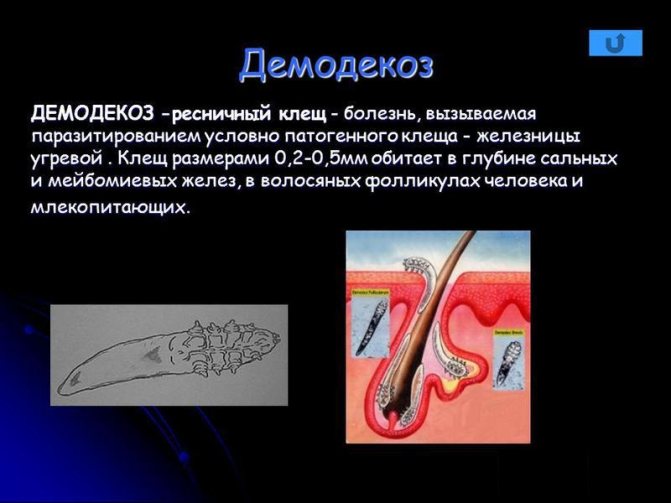
Demodecosis
On a note! Typically, the ciliary parasite affects the lash area, but it can also spread to the ears, upper lip, and eyelids. In such cases, the symptoms of demodicosis occur.


Demodectic mange (ciliary mite)
The main factors contributing to the activation of the ciliary mite include:
- intensive work of the sebaceous glands, which increases the oily skin;
- excessive consumption of alcoholic beverages;
- frequent lack of sleep, which leads to increased body fatigue;
- severe stress;
- hormonal imbalance;
- frequent use of cosmetics;
- improper or unbalanced diet;
- decreased immune system;
- the consequences of previously transferred severe pathologies.


Main reasons
All of these factors, in combination or separately, can provoke the activation of ticks, which ultimately leads to the development of the disease.
Description of the ciliary mite and its reproduction
Demodexes are small arachnids, the size of which is no more than 0.2-0.5 mm. Their lifestyle completely takes place in the sebaceous and sweat glands of the human body (see photo of the ciliary mite), that is, Demodexes are human symbionts. These creatures can be permanent inhabitants on the skin without causing any harm, that is, they are in a neutral or conditionally pathogenic form of their development. The favorite habitat of Demodex is human eyelids and eyelashes.
Under unfavorable circumstances for humans (deterioration of immunity, hypothermia, changes in hormone levels, etc.), mites become pathogenic and begin to multiply strongly, which causes an unpleasant disease - demodicosis.
During the breeding season, female ciliated mites lay eggs directly in the hair follicles near the eyes. After 60 hours, larvae hatch from them, which still cannot even move, but are only able to feed for 40 hours and grow.Their next stage is transformation into a nymph that lives exclusively on hair follicles.
On a note!
The main diet of the demodex mite on the eyelashes at all stages of development is dead cells of the epidermis and sebum (therefore, parasites more often choose people with oily skin), which is not at all dangerous for humans. However, the waste products of ciliary mites, which appear in large quantities during the mass reproduction of parasites, often become strong allergens, provoking a negative reaction of the human body.
Typical symptoms
The following signs may indicate the development of demodicosis:
- the formation of red spots on the patient's face, as well as on the surface of the eyelids;
- the appearance of itching in the eye area, which is often worse at night;
- constant fatigue of the organs of vision;
- swelling of the eyelids;
- the formation of specific crusts on the patient's eyelashes;
- intense loss of eyelashes (they can fall out dozens at a time);
- the formation of barley in the upper or lower eyelid;
- in the morning, the patient's eyes are difficult to open due to stuck eyelashes;
- the appearance of acne or acne on the skin. Most often it affects the skin of the face;
- through the expansion of the pores, the patient's skin can become greasy;
- if the disease has spread to the patient's scalp, then hair loss and severe itching in the scalp area may be added to all symptoms.


Signs of demodicosis
Due to the similarity of symptoms, demodicosis is often confused with another ophthalmic disease - conjunctivitis. To avoid such mistakes and not start treating the wrong disease, at the first manifestations of symptoms, you should immediately seek help from a doctor.
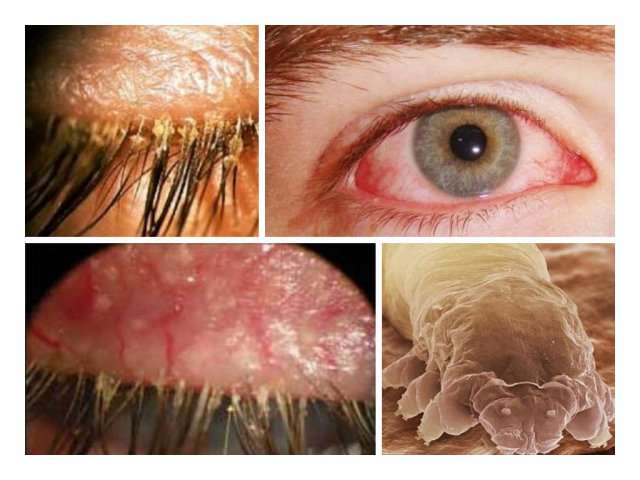

Demodex eye
How pathology manifests itself
Symptoms in the presence of ticks can be very diverse: from low-symptom to extremely dangerous for the organ (eye) manifestations. The negative influence of demodicosis can be explained by such factors:
- an allergic reaction to foreign body and toxic substances emitted by them;
- mechanical irritation of the eyelid and the eye itself (the activity of mites and skin particles that enter the visual organ);
- bacterial infection.
In the initial stages of infection, a person may not feel the presence of parasites. In this case, the inflammatory process is not observed. In this case, mites in the eyes can be detected quite by accident, during a routine medical examination with an ophthalmologist.
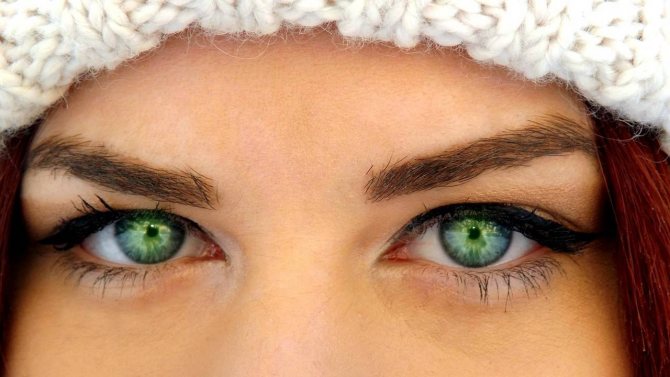

Over time (the so-called asymptomatic form), the patient may experience some discomfort in the eye, the following symptoms appear:
- itching of the eyelids (more often the upper ones);
- a feeling of cramps;
- stickiness on the eyelashes.
Such manifestations are more noticeable in the morning, after a long sleep. Using a slit lamp, the specialist notices the translucency of the clutch, the enlargement of the bulbs of individual eyelashes, and slight irritation of the eyelid conjunctiva. The situation is more complicated when specialists diagnose already demodectic blepharitis. In this case, the following symptoms usually appear:
- noticeable thickening (swelling) of the eyelids;
- peeling of the skin;
- clutches can be seen even without a magnifying tool, they appear in almost every eyelash;
- at the edges of the eyelids, a yellow mucous liquid collects, which turns into crusts over time;
- the mucous membrane is hyperemic.
Demodectic blepharitis symptoms
If you do not start urgent treatment, irritation of the conjunctiva begins. In this case, doctors testify to acute or chronic blepharoconjunctivitis. This form can be supplemented by infectious infection, in particular, staphylococci, streptococci. Purulent discharge from the eyelid, ulcers (small wounds), chalazion (tumor-like formations on the eyelid) are common symptoms of blepharoconjunctivitis.
The list of other complications that can occur with demodicosis include:
- dermatitis of the eyelids - a consequence of an allergic reaction;
- episcleritis - an inflammatory process of the outer shell of the eye in humans;
- chronic or acute form of meibomite - an inflammatory process in the meibomian glands.
Keratitis
About 20% of patients have keratitis, a disease in which inflammation affects the cornea of the eye. Such damage can be marginal, deep, or superficial. The main manifestations of such a complication of an eye mite are:
- deterioration of vision;
- sensitivity to light;
- lacrimation;
- pain all over the eye.
An eye mite can have other manifestations, for example:
- loss of eyelashes;
- significant thinning of the eyelashes;
- a feeling of sand in the eye;
- burning eyes after a night's rest;
- the appearance of barley.
By the place of localization, demodicosis of the face, eyelids, body and head is distinguished. Since the tick is able to migrate, several types of pathology can be observed in one person at once. Depending on the clinical manifestations, the following types of the disease are distinguished:
- Erythematous. The skin becomes oily, red, inflamed, covered with rashes, the pores expand. The affected areas are clearly delineated, dry crusts appear on them.
- Papular-pustular. Papules and pustules up to 2 mm in size, filled with sebum, form on the skin. The color intensity ranges from light pink to burgundy.
- Hypertrophic. Observed in advanced cases. Skin nutrition is disrupted, the skin thickens due to the active growth of epithelial cells, becomes bumpy, red.
Diagnostic features
The first thing to do when suspicious symptoms appear is to conduct a diagnostic examination. With its help, you can determine the type of disease. In the case of ciliary mites, the examination should be carried out not only by an ophthalmologist, but also by a dermatologist. To make an accurate diagnosis, a laboratory analysis of scrapings from the affected skin area and an eyelash test (examination of the patient's eyelashes) are performed. The results of these tests are sufficient to make a diagnosis. Only after this is the appropriate course of therapy prescribed.


Diagnosis of demodicosis
On a note! With the development of demodicosis, you do not need to wait until the symptoms go away on their own, since this will not happen. Only high-quality diagnostics and a properly prescribed course of therapy will eliminate the ailment as soon as possible. Self-medication in this case may not only fail to help cope with the symptoms of pathology, but also lead to serious complications.
Parasites on human eyelashes
Microorganisms are constantly living in a teleperson. Some species are completely harmless and are visible only under a microscope, others of them may present a hazard under certain conditions. The latter includes the rhodademodex mite, 0.4 mm in size. The reasons why parasites become active are still unclear. Experts have found that with the reduction of immunity and the development of diseases, mites begin to burn off the eyelashes, eyebrows, ears and nasolabial region.


Eyelid demodicosis - a disease caused by a ciliary mite
Often, eyelashes suffer from parasites, ticks live in hair bulbs. Usually females lay eggs and die out. After 60 hours, the offspring appears, which remain motionless for a long time, after 172 hours the parasites become adults and penetrate the eyelash bulb.
Itself mite is not dangerous, it feeds on dead cells. Contribute to the development of disease products of life activity, causing strong allergic reactions. A sign of the onset of the disease is the reddening of the eyes. If you do not start timely treatment, the disease can become a reason for the complete loss of eyelash, irritation of the mucous membrane of the eye, and then a decrease in visual acuity.
The ciliated mite is a microscopic arthropod also known as the acne gland or demodex. It has a translucent oblong body covered with scales, its length does not exceed 0.5 mm. In the front part of the body there are 4 pairs of short legs. During reproduction, parasites migrate, moving at a speed of about 12 km / h.
There are 2 types of the parasite: demodex brevis and demodex folliculorum. The first lives in the sebaceous glands and the mouths of the ducts, the second - in the hair follicles. Demodex can lead to disruption of metabolic processes in the skin, deterioration of the endocrine glands, damage to the vascular walls, inflammation and infections of the eyes.
Treatment methods
After establishing an accurate diagnosis, the doctor prescribes a course of therapy, including taking medications, using ointments and other traditional therapy. Many people use proven traditional medicines as a supplement. This can significantly speed up the healing process. Let's take a look at each of these methods separately.
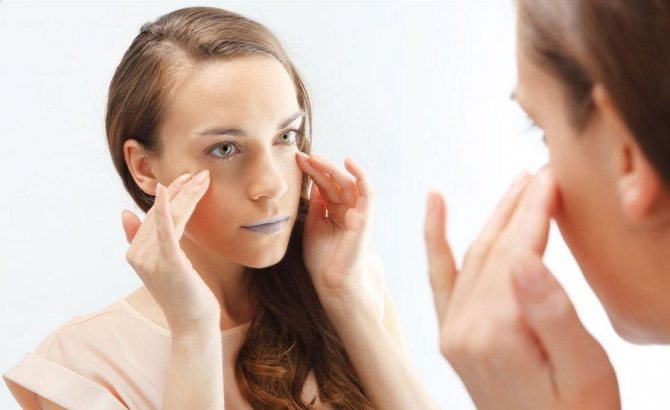

Treatment of demodicosis
Pharmacy preparations
First of all, the doctor removes all visible symptoms of the disease, which includes the formed scales and white plaque on the patient's eyelashes. Removal is performed using a special alcohol-containing lotion... This procedure allows not only to dissolve plaque, but also to destroy a large number of parasites when disinfecting the affected area of the skin. The surface of the eyelids and eyelashes are not all areas that need to be carefully treated. Lotion is also applied to the auricles and upper lip.
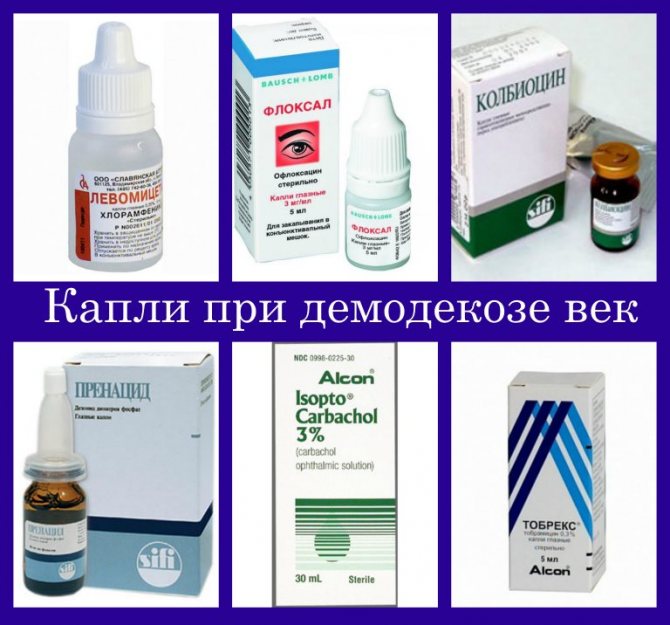

Drops with demodicosis of the eyelids
Then doctors prescribe ointments and creams, the main task of which is to suppress the development of parasites. As a rule, mercury and zinc act as an active component of such drugs - they negatively affect ticks, paralyzing their muscles. This soon causes the death of the parasites.
The most effective drugs prescribed for the treatment of ciliary mites include:
- Demalan;
- "Fosfakol";
- Physostigmine;
- "Armin";
- "Tosmilen";
- "Ichthyol ointment".


"Ichthyol ointment"
If the pathology is complicated by purulent inflammatory processes affecting the patient's organs of vision, the doctor may prescribe antibiotic therapy, which includes the use of eye drops "Cipromed" or "Tobrex". To achieve the maximum effect in the treatment of demodicosis, an integrated approach is required. In parallel with the use of medications, the patient must follow a special diet throughout the entire course of therapy. Proper nutrition should be aimed at strengthening the immune system.
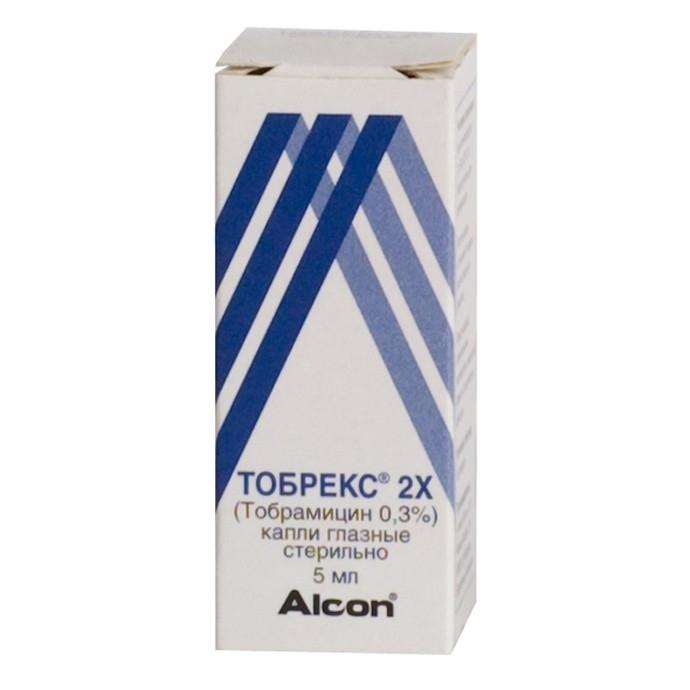

"Tobrex"
Folk remedies
As noted earlier, proven traditional medicine is often used as a supplement. Many of them are not inferior in their effectiveness even to the most expensive pharmaceutical preparations. But we must not forget that when using folk remedies, one should not abandon traditional therapy, especially since everything needs to be done only after the approval of doctors. Below are the most common recipes used for demodicosis.
Table. Folk remedies for the treatment of ciliary mites.
| Name of the product, photo | Application |
| Linden decoction | To prepare a medicinal broth, you need to pour 200 ml of boiling water 2 tbsp. l. chopped linden and cook over low heat for 5-7 minutes. Treat the affected areas with the prepared product 2 times a day. The duration of the treatment course is until the symptoms are completely eliminated. |
| Garlic compress | With the help of garlic, you can treat demodicosis. To do this, you need to squeeze the juice from several cloves of garlic, then moisten gauze swabs in the resulting juice and apply them to the affected eyelids. The duration of the procedure is 20-30 minutes. But during this time, tampons or gauze dressings should be regularly changed to new ones. |
| Oak bark infusion | To prepare oak infusion, you need to pour 300 ml of boiling water 1 tbsp. l. oak bark and leave for 30 minutes. Strain the cooled product through cheesecloth to eliminate plant residues, and apply lotions 1-2 times a day. You can also take the prepared infusion internally. |
| Tansy tincture | To prepare it, you need to pour a little dried tansy herb with boiling water and leave for 4-5 hours. Take the finished product by mouth, 50 ml three times a day. It is advisable to do this before each meal. |
| Wormwood decoction | To prepare a medicinal broth, you need to pour 1 liter of boiling water 2 tbsp. l. chopped dry herbs and cook over low heat for 3-5 minutes. After the product has cooled to room temperature, strain it through several layers of gauze and take 50 ml daily, dividing this amount of medicine into several doses. The duration of the treatment course is 7 days. |
On a note! Most often, folk remedies are used in treatment in the early stages of the disease, since at later stages they are ineffective. It is imperative to use pharmaceutical preparations along with traditional medicine. This will improve the effectiveness of therapy.
Nutrition Tips
If a ciliary mite is detected in a patient, then a certain diet is necessarily assigned to him:
- The amount of smoked, spicy and salty consumed is significantly reduced;
- Excludes chocolate, honey, alcohol;
- Sweets are removed;
- More fermented milk products are used: cottage cheese, fermented baked milk, kefir, etc.
Sweets are removed from the diet because they are considered the favorite food of parasites. It is for this reason that their consumption is limited in order to deprive the parasites of food.
Prevention measures
It is much easier to prevent a disease than to cure it. This rule applies to all pathologies, including demodex.
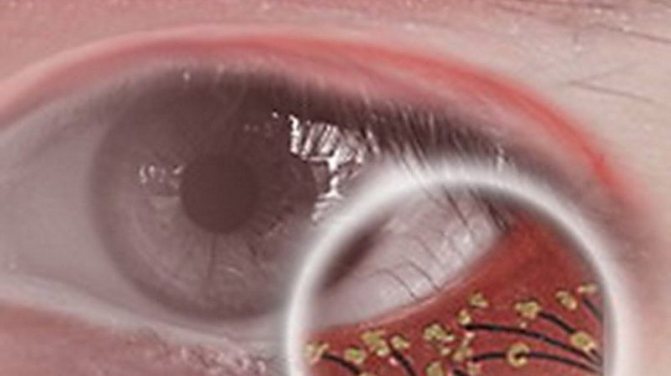

Prevention of demodicosis
There are many preventive measures to prevent the development of the appearance of an eyelash mite:
- use only your personal hygiene items and do not share them with other people;
- wash your face often using hygienic soap;
- try never to rub your eyes. Moreover, it is not recommended to do this not only with dirty, but also with clean hands;
- if you regularly use cosmetics, then before going to bed they must be washed off with warm water;
- normalize your diet. Make sure that the food you eat contains enough vitamins and minerals;
- regularly conduct preventive examinations with an ophthalmologist. This will allow identifying possible problems with the organs of vision at an early stage of development, which will significantly speed up the healing process;
- timely treat all diseases that have arisen, especially infectious ones;
- avoid severe stress, if you work in a stressful job - change it;
- get enough sleep. A good rest will strengthen the body's immune system, which will significantly reduce the likelihood of developing pathology.


Take care of your eyes
You need to strengthen your immunity. This will avoid not only demodicosis, but also other diseases. First of all, this requires follow the rules of personal hygiene and eat right, because, as you know, the ciliary mite does not pose any threat to a healthy body.
Preventive actions
If the disease has caused complications, it will not be possible to get rid of it quickly, complex treatment and time are required. Prevention is very important, which prevents the multiplication of parasites. If you know where the disease came from, then these factors should be immediately excluded. Refuse eyelash extensions, do not visit the sauna and bath, do not use someone else's cosmetics.
Use only personal towels, and do not give them to anyone for use, as a person can be a carrier of the disease and it will be infectious for you. Follow proper nutrition, lead a healthy lifestyle. Avoid stress and get adequate sleep. Monitor your health, support the immune system. Undergo preventive examinations, and for any symptoms, see a doctor.
Dieting


For effective treatment and preservation of the result obtained, patients are prescribed dietary food, which helps to eliminate toxins, increase the level of the body's protective functions and normalize the functioning of the gastrointestinal tract.
The patient should give up spicy, pickled, smoked and spicy foods, replacing these foods with fresh vegetables, fruits and lean meat. From the daily diet, you will also have to exclude foods such as:
- sausages and sausages;
- pork liver;
- canned fish;
- pasta;
- rice;
- hard cheese;
- fatty sour cream and cream;
- citrus;
- grapes, red currants;
- chips and crackers;
- sugar, chocolate and honey;
- confectionery.
Important! It is mandatory to refuse strong tea, coffee, alcoholic and non-alcoholic carbonated drinks.
The list of permitted foods includes:
- zucchini, eggplant
- broccoli;
- celery;
- dill and parsley;
- Jerusalem artichoke;
- lean fish varieties;
- chicken and quail eggs;
- porridge - buckwheat, barley, oatmeal;
- fermented milk products with a low fat content;
- apples and pears
In addition to changing the diet, it is necessary to reduce the amount of salt consumed, eat in small portions and observe the drinking regime, drinking at least 1.5-2 liters of water per day.
Photo
In these photos you can see what the eyes of people who have ciliary mites look like:
More details about eye mites are described in this video:
It is also useful to read: Linen (dust) mites in humans
Hygiene in the presence of an eye mite
Symptomatic treatment of pathology must be supported by diet therapy, hygienic actions. The demodex mite dies on the eyelashes if the rules are followed:
- An eye mite patient should use their own towel to reduce the risk of transmission of the parasitic disease.
- For the period of illness, exclude the use of cosmetics. A sick person should not share their cosmetics with healthy people.
- Objects that come into contact with the patient's face must be thoroughly washed with antiseptic agents.
- It is advisable to change bed linen 2-3 times a week. It must be washed for a long time at high temperatures. A pillowcase on the patient's pillow needs hygienic actions. Iron the laundry on both sides after washing.
- A person suffering from Demodex should not visit public places such as saunas, swimming pools, baths.
- It is forbidden to swim in polluted water bodies.
- Particular attention must be paid to a sick child. He should not scratch his eyes with dirty hands.
Compliance with simple rules, correct diet, timely treatment, special creams and ointments help to prevent inflammatory complications of ciliary disease (conjunctivitis, blepharospasm, keratitis, ticks), and avoid unpleasant consequences after cosmetic procedures.

